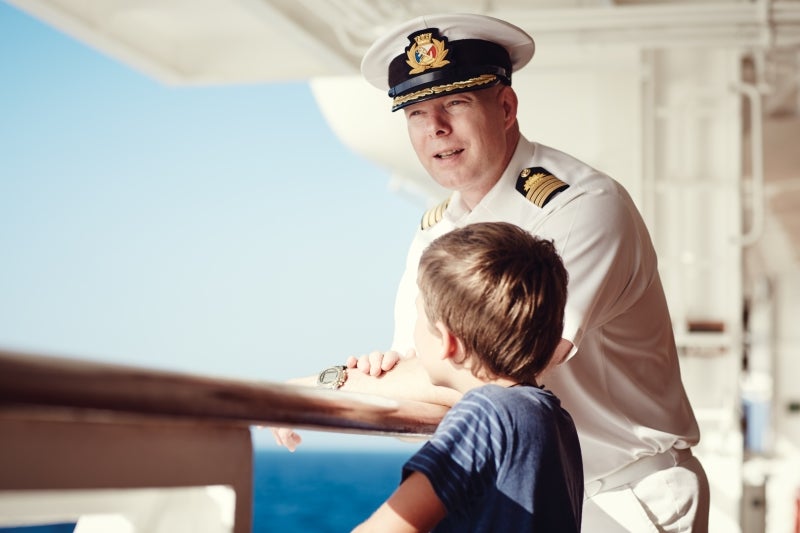
The expectations around gratuities can be a stressful course to navigate for many customers. The varied tipping cultures and conventions around the world can be difficult for consumers to predict, causing confusion whether they’re finishing a meal, having bags carried by a hotel porter or stepping out of a taxi.
The cruise industry works within its own world of gratuities, with a range of tipping policies set by operators. Unlike most hotels and resort holidays, where guests usually tip staff members at their own discretion, the majority of cruise providers include a daily service charge per guest, which is added to passengers’ onboard accounts, although corporate stances vary from line to line.
“Guidelines on tipping vary among cruise companies but the majority of operators aim to make it simple for passengers by automatically adding a sum to the customer’s account on a daily basis,” says Cruise Lines International Association (CLIA) managing director for the UK and Ireland Andy Harmer. “Some companies will include tipping in the overall cost of a cruise and some will have a ‘no tipping’ policy.”
Tipping on cruise ships: varied policies
Even within the relatively established practice of automatic daily gratuities, charges and related policies differ between operators. Royal Caribbean cruises add a daily charge of $14.50 per passenger; for Princess Cruises the charge varies from $13.50 to $15.50 depending on cabin type; Celebrity Cruise daily charges run from $4.50 a day in a state room to $18 for passengers in suites.
Do children count when levying these service charges? Again, positions vary across the industry. The likes of Holland America, Cunard and Disney Cruise Line include children in per-passenger gratuity rates, while Cruise & Maritime Voyages and Hurtigruten exclude children, and other lines set age limits above which children are included.
Meanwhile, many luxury cruise brands – including Seabourn and Regent Seven Seas – include service charges in the initial cost of a cruise, removing onboard charges entirely. This is the standard for river cruises, with firms either including service in the fare or – as in the case of Viking River Cruises, Riviera Travel and others – eliminate automatic gratuities altogether, instead favouring recommended service rates to be followed (or not) at the guest’s discretion.
How well do you really know your competitors?
Access the most comprehensive Company Profiles on the market, powered by GlobalData. Save hours of research. Gain competitive edge.

Thank you!
Your download email will arrive shortly
Not ready to buy yet? Download a free sample
We are confident about the unique quality of our Company Profiles. However, we want you to make the most beneficial decision for your business, so we offer a free sample that you can download by submitting the below form
By GlobalDataAttitudes to tipping vary internationally
Confusion and frustration over automatic tipping standards are a frequent talking point among seasoned cruisers. Part of this is a function of varying attitudes towards tipping globally. While US-based cruise passengers are a product of a culture where tipping is an absolute expectation in virtually all service-based industries, travellers of other nationalities aren’t always as ready to reach into their pockets, especially if they are forced to opt out rather than choosing to opt in.
A 2014 TripAdvisor survey of tourists from eight countries found that Americans were the top tippers, with 60% of US-based respondents saying they always tip for service while on holiday. At the other end of the scale, Russian and British tourists were found to be less likely to tip on every holiday (28% and 26% respectively), while French (15%) and Italian (11%) travellers were at the bottom of the table. According to Harmer, however, the less gratuity-inclined British travellers have generally now embraced the prevailing norms in cruise industry service charges.
“As the popularity of cruising grows in the UK, this US-style approach to tipping is now totally normal for most cruise guests, who realise the hard work by crew and staff onboard ships should be remunerated,” he says.
Cruise conventions: the service debate
Undoubtedly, including daily service charges brings some key benefits, both for passengers and crew. In a closed environment where most costs are paid upfront and customers may have limited cash at the ready, a daily charge that can be paid at the end of a cruise simplifies the process, especially for passengers who are unsure of tipping expectations.
From the crew’s perspective, daily service charges mean that accumulated gratuities can be distributed evenly among all crew, including those – such as kitchen staff and technical crew – who are less visible to passengers but equally responsible for their experience and safety.
Some passengers don’t see it this way, preferring to offer tips to individual staff who have personally gone out of their way to improve their experience. For some cruisers, automatic service charges inflame suspicions about how their tips are being distributed, as well as concerns that gratuities are being used to supplement sub-par basic salaries, although Harmer contends that “throughout the cruise industry, staff are paid fair and appropriate wages for their excellent service”.
The cost of service
Sharp increases in service charges also appear difficult to justify. Holland America, for example, has increased its daily service charge from 1 December to $14.50 for passengers in standard cabins. The increase brings the total extra cost for a family of four on a seven-night voyage to $406, and represents a 26% increase on the $11.50 daily charge in November 2015, far above the general rate of inflation.
“The inclusive nature of a cruise, and the ability for travellers to budget their spending as a result, is one of the big attractions of this type of holiday,” says Harmer. “However, unlike a similar resort-based holiday, cruise lines’ gratuity policies usually mean an additional cost to the trip.”
Given that adding service charges to onboard accounts can be a source of confusion for non-veteran cruisers, is transparency an issue in cruise tipping? Not so, according to Harmer. “All cruise lines are transparent about their tipping policies, and the information is easy to find on websites and in brochures,” he says.
Still, in January Harmer told Travel Weekly: “What a lot of passengers don’t realise is that if they do have issues, they should raise these on the ship so they can be dealt with, and if they’re not happy they can have [the gratuity] taken off.”
So clearly some passengers aren’t getting the opt-out message, and while reading the fine print is ultimately the customer’s responsibility, cruise operators could arguably be doing more to be upfront about the extra cost of service. And with gratuity charges rising regularly on many major cruise lines, the pressure is on for providers to ensure that service goes above and beyond.
Is all-inclusive the future?
These sorts of gripes have prompted policy changes from some operators. In August last year, P&O Cruises – which mainly serves British passengers – announced that it will scrap daily service charges on all cruises from May 2019, despite having raised the charge from £6 to £7 just a few months earlier.
“We are not planning on increasing any of our fares,” wrote a P&O spokesperson on Facebook in August. “The discretionary daily service charge is no longer applicable. ‘Tipping’ staff is neither required nor expected but if you choose to do so then that’s entirely your decision.”
An increasing trend in the industry is to promote fully all-inclusive cruises where service charges are included in the upfront cost of the package. In 2017, Norwegian Cruise Line started offering its Premium All Inclusive package with built-in service charges, side-stepping the criticism that daily onboard service charges represent a hidden cost for passengers.
“Premium All Inclusive has driven greater simplicity for agents having to explain and sell cruises, and greater confidence in consumers having to budget,” Norwegian Cruise Line’s UK managing director Nick Wilkinson told Travel Weekly in January. “The biggest change since introducing Premium All Inclusive is double-digit growth we’ve seen in the long-tail of agents we’ve never worked with before, now selling Norwegian. They are comfortable selling us.”







